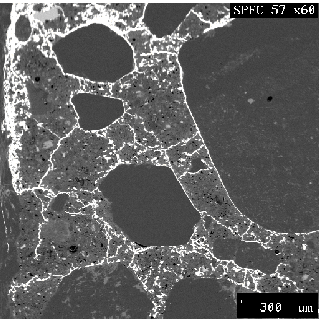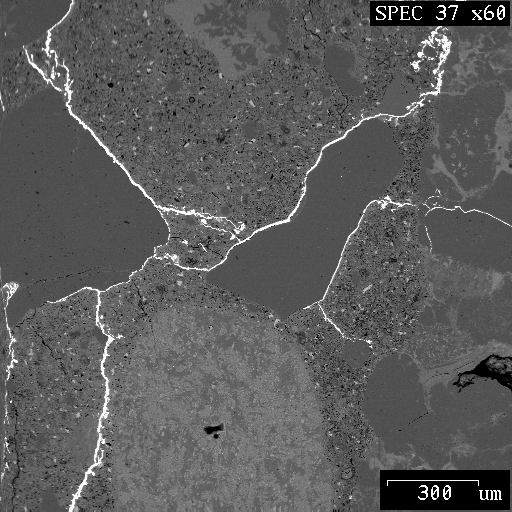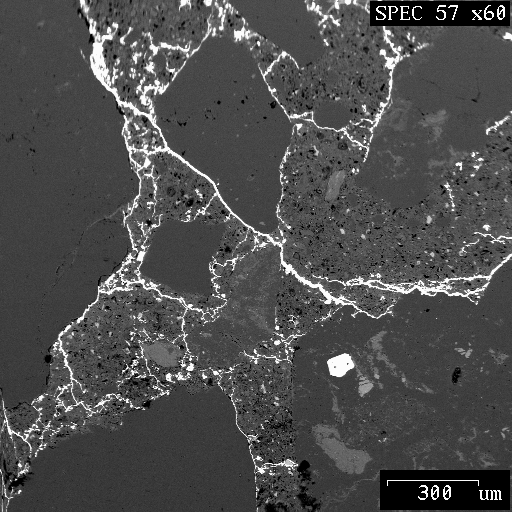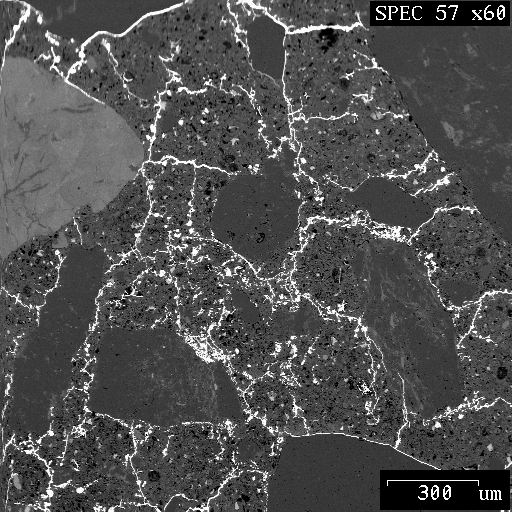


The preservation of stress-induced structure and the identification
of cracks induced by loading and unloading are important to understand
the mechanisms for the generation, propagation and interaction of stress-induced
microcracks in complex systems such as concrete. It is important to understand
how the formation, growth and interaction of microcracks leads to macrofracture,
which are usually the form of failure observed in engineering practice.
This research aims at direct observations of the size, orientation and
interaction of microcracks in concrete specimens as they exist under load.
This method involves the application of a metal in liquid
phase to preserve the microstructure of stress-induced microcracks in concrete.
Used in conjunction with scanning electron microscopy (SEM), it has made
possible the detailed observation of microcracks in concrete as they exist
under load.
|
|
The advantage of such an alloy is that it can be injected into voids and stress-induced microcracks at the desired stress level, then solidified at any stage of the experiment to preserve, in three-dimensional form, the geometry of the microcracks induced at any given stage of the experiment.
 |
 |
 |
 |

 Return
to Kamran M. Nemati's Research Interests
Return
to Kamran M. Nemati's Research Interests
Send email: nemati@ce.berkeley.edu